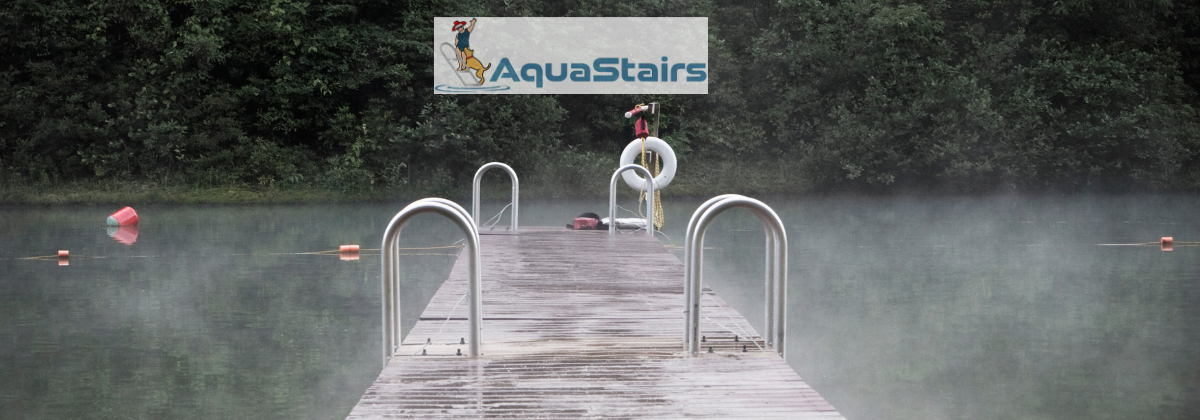
Docks are beautiful places to enjoy the water, on a fishing trip, or just resting at the water's edge. Even if you do not stress dock ladder safety, that cool plunge or nice view can quickly turn sour. Using dock ladders safely is crucial. They are a vital link between the water and the dock.
This article provides a deep look at dock ladder safety guidelines. They ensure a safe climb every time. These tips will give you the necessary information to climb dock ladders confidently. Whether you are an experienced boater, going to the dock occasionally is fine.
Choosing the Right Dock Ladder
Choosing the right ladder is the first step. It ensures your dock ladder is safe. Here are some things to take into consideration:
- Length: The ladder needs to reach that level of water regardless of the tides or variations in the water level. Ensure your dock's bottom rung is always underwater enough for safe access and exit. Consider the height of your dock at high and low tide.
- Material: In most cases, aluminum or stainless steel is used to construct dock ladders. Stainless steel resists corrosion more than aluminum. But, aluminum is lighter and cheaper. It is particularly significant in situations that include saltwater.
- Capacity: Find the people who will most likely use your boat simultaneously. Then, choose a ladder that holds more weight than that number.
- Rungs: For safe footing, even when wet, choose a ladder with broad rungs that are resistant to slipping.
Pre-Climb Inspection
Please take some time to get an overview of your dock ladder before you step onto it. Find other instances of damage, such as the following:
- Bent or loose rungs
- Cracked welds
- Corrosion (especially on aluminum ladders)
- Worn or missing anti-slip trea
Using the ladder is unsafe if you see any signs of damage. Repair as soon as possible to ensure the safety of the dock ladder.
Safe Climbing and Descending Techniques
First, check that you have the right ladder and that it is in good condition. Then, take the following essential steps to climb and descend safely:
- Maintain three points of contact:
Always have three points of contact on the ladder. It can be two hands and a foot or two feet and a hand. It applies when you are going up or down.
- Face the ladder:
Never descend from a dock ladder in a different direction. Always use the ladder, and if handrails are available, utilize them.
- Take your time:
Take your time. The transition might need to be more apparent when boarding or departing the boat. It's vital to use slow, controlled motions.
- Be aware of footwear:
Do not attempt to climb the ladder while wearing flip-flops or bare feet. If you want to avoid slipping, use shoes with a firm grip.
- Carry one item at a time:
When climbing, you should only carry a few goods at a time. It is essential to ensure that you keep an optimum balance by making different journeys.
Additional Dock Ladder Safety Tips
The following are some extra safety tips to keep in mind when considering dock ladders:
- Secure the ladder:
Check to see that the ladder is robustly attached to the dock. Ensure that no connections or bolts are loose, and if any are found, tighten them.
- Mind the waves:
When the sea is rough, and the waves are likely to move the boat, you should avoid climbing the ladder. A safer entrance and departure may be achieved by waiting for calmer waters.
- Weather Conditions:
Be extra careful when climbing a dock ladder. Do this when it is windy or rainy. The rungs and high gusts may make it challenging to keep balance, and the rungs themselves may be slick.
- Children and pets:
Children and dogs should be supervised. They should be put between the ladder and the dock.
- Life jackets:
Tell everyone on board to wear life jackets. It is especially important for children. They should do this near the water or the dock ladder. It will keep them safe.
Safe Entry and Exit for Boats
When using the dock ladder to board a boat, keep in mind some extra safety concerns:
Life Jackets: A Vital Safety Measure
When using a dock ladder, you must wear a life jacket, regardless of whether you can swim. It gives you buoyancy if you fall into the water. Or if you end up in an unforeseen place.
Maintenance Matters: Keeping Your Dock Ladder Safe
Regular maintenance is necessary to ensure the safety of the dock ladder. Here's what you can do:
Conclusion
There will be fewer accidents and injuries if you use these dock ladder safety rules. Always remember that a day on the water can be enjoyable and safe with just a little bit of care. Dock ladders with platforms at the bottom are something to think about putting in. It is for those who may have trouble getting on and off the boat due to mobility issues. The platform offers a steady surface. Spending the day at sea ought to be a carefree and delightful affair.
Make dock ladder safety a top priority. It will allow for a safe and easy transfer from your boat to the dock.
